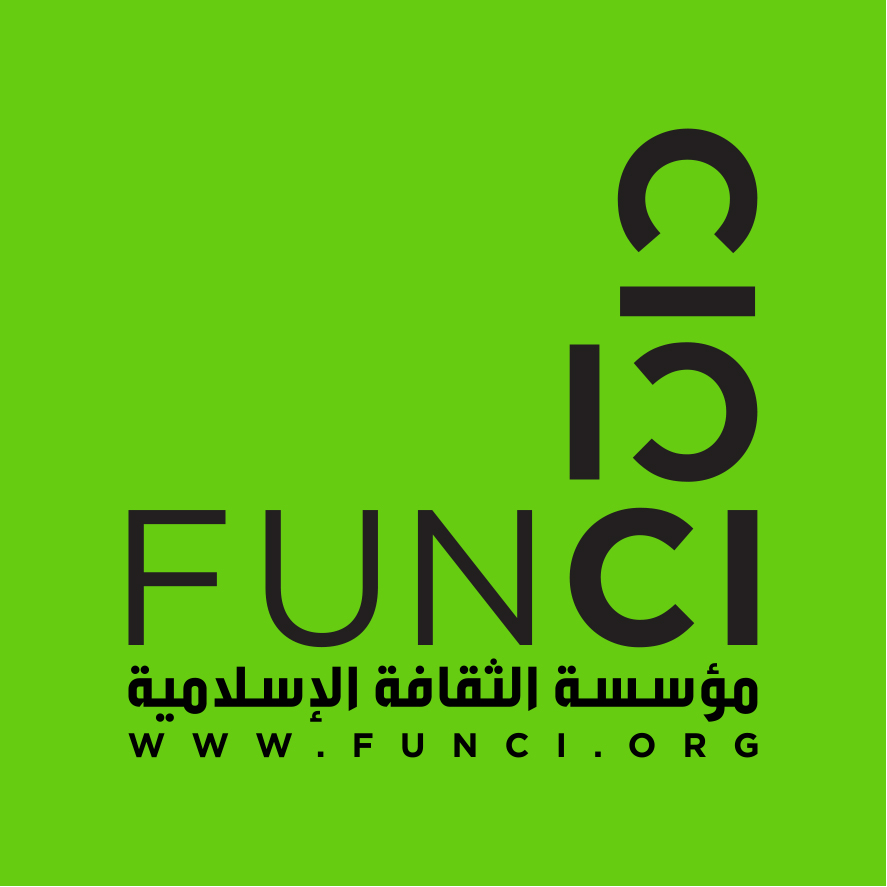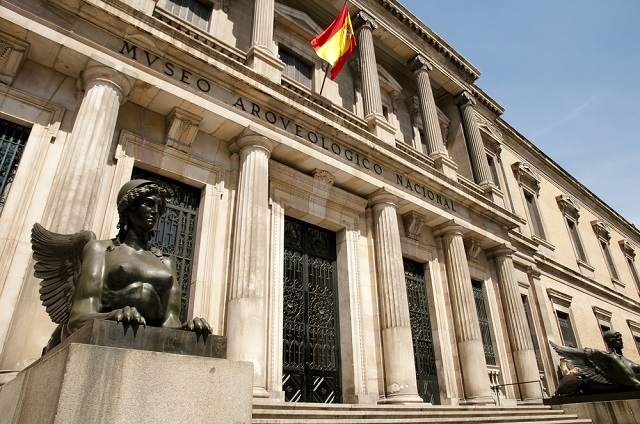Mayrit hoy
CEMI at the National Archaeological Museum of Madrid
On 23 January, the Islamic Culture Foundation (FUNCI) organised the event ‘Revisiting Maŷriṭ: heritage, history and memory of Islamic Madrid’, a round table about the book La madina olvidada. Historia y memoria del Madrid islámico, mudéjar y morisco (coordinated by Daniel Gil-Benumeya and Marisa Bueno, ed. Dykinson). The National Archaeological Museum (MAN) hosted this activity, which brought together important researchers and professionals who have worked on the contexts of al-Andalus and its survival in the city of Madrid.
Revisiting Maŷriṭ: heritage, history and memory of Islamic Madrid.
Paula Pagés, a technician in the Department of Medieval Antiquities at the National Archaeological Museum (MAN), welcomed the participants to the museum’s auditorium, where 244 people joined us on the afternoon of 23 January, and introduced the participants at the round table. The activity was moderated by the architect and member of the Royal Academy of Fine Arts of San Fernando, Antonio Almagro, who first spoke about the Islamic origins of the city of Madrid. This was followed by the presentation of each of the researchers participating in the round table, ‘Revisiting Maŷriṭ: heritage, history and memory of Islamic Madrid’, based on the book entitled La madina olvidada. Historia y memoria del Madrid islámico, mudéjar y morisco, Marisa Bueno (University of Valladolid), Daniel Gil-Benumeya (Complutense University of Madrid), Christine Mazzoli-Guintard (University of Nantes), José Ignacio Murillo (Urbe pro Orbe).
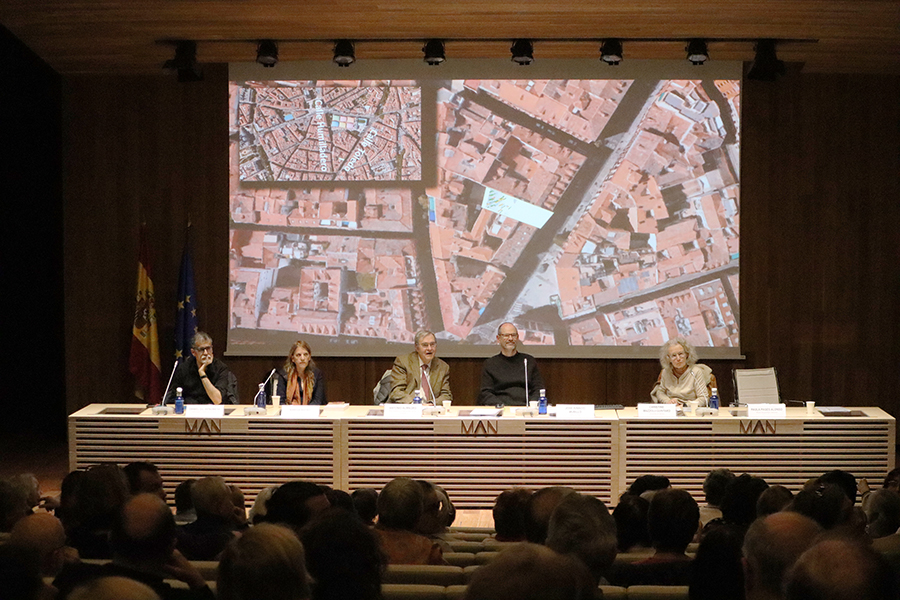
As Marisa Bueno commented, there is a great deal of information preserved about this primitive city: hisn, medina, mosque, baths and walls; these are just some of the elements that have left their mark on the material and immaterial nature of the city from its origins to the present day. Researcher Christine Mazzoli-Guintard has been working along the same lines for many years; during her presentation she recalled her beginnings motivated by her relationship with researchers M.ª Jesús Viguera and Cristina Segura. To a large extent, she has dedicated her career to advancing several lines of work on Madrid: the foundation, the surrounding territory, society and the urban landscape, which has made it possible to make Islamic Madrid known both inside and outside Spain.
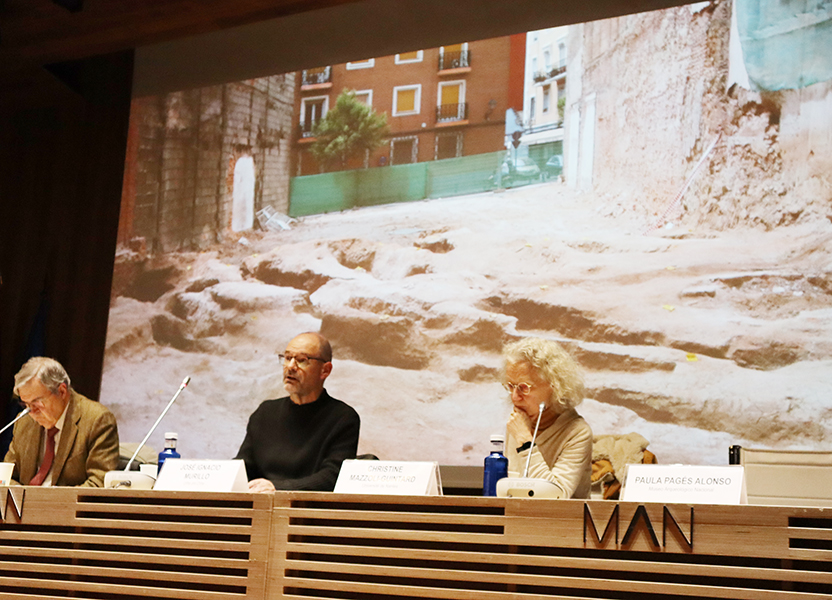
José Ignacio Murillo, from his experience as an archaeologist, shared the results of his intervention at 68 Toledo Street, where the remains of a maqbara were found, the use of which extended from the 9th to the 15th century. He explained that different phases had been differentiated according to the position of the deceased: the oldest in supine decubitus and head tilted to one side; the most modern in lateral decubitus, in both cases reflecting an orientation towards the southeast, in the direction of Mecca. On the other hand, apart from the remains of this cemetery, he mentioned that in Madrid, a lot of decontextualised material has also appeared, especially ceramics, and constructive structures: the wall (such as the section preserved in the Galería de las Colecciones Reales) or several dwellings (such as those on the hill of Las Vistillas).
Marisa Bueno, who specialises in archaeology and territory in the Middle Ages, highlighted the interest in places of worship, with special mention of Manuela Marín’s work on the ulemas of Madrid. He also pointed out that, after the Castilian conquest, no details have been found about the process of reuse of the mosque, about the Christian community (whose data we owe, fundamentally, to the historiographical tradition of the 16th century, that is, information generated many years after the events) or about the continuity of the Islamic population of Madrid. However, we do know of the existence of a mosque in the 14th century, within the boundaries of the Morería.
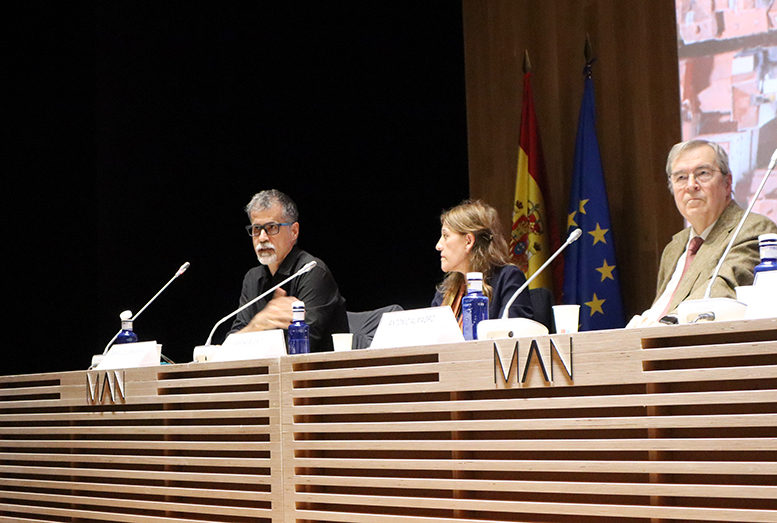
Daniel Gil-Benumeya, as Arabist and scientific coordinator of the Center of Studies about Islamic Madrid (CEMI; one of FUNCI’s flagship projects), remarked that Madrid is the only European capital of Islamic origin. A history that lasted for seven centuries, but, at the same time, is unknown to many today; a problem that is highlighted by the lack of memory spaces about this period in the city. It was precisely with the aim of shedding light on this matter, and to fight against exclusionary narratives, that CEMI was created in 2017. It should not be forgotten that Madrid currently has a diverse society. One of the first actions carried out by CEMI to revalue this legacy was the holding of the 1st Interdisciplinary Congress on the History and Memory of Islamic Madrid. In addition to the legal framework that protects these remains, Gil-Benumeya appealed to the importance of dissemination and knowledge as another tool for their preservation, which is why he encouraged the public present there to virtually access the presentations of the congress (available on FUNCI’s YouTube channel), content that has fed the publication La madina olvidada. Historia y memoria del Madrid islámico, mudéjar y morisco
In short, written, artistic or archaeological sources may be limited and have suffered deterioration and destruction over time, but in recent years we have witnessed an increase in scientific and dissemination activity that has led to Islamic Madrid acquiring a new position in the collective imagination. Although much work remains to be done, it is clear that the narrative has been changing and the contribution of the Andalusians to the culture of the Iberian Peninsula, which is inseparable from the Spanish identity, is increasingly recognised.
Finally, we would like to thank all those who have made this activity possible, as well as the team at the National Archaeological Museum for hosting an event that has been warmly received by the public. We hope that this fruitful collaboration will be reflected in future projects and activities that we can organise between both entities.
Este artículo está disponible en Español.

